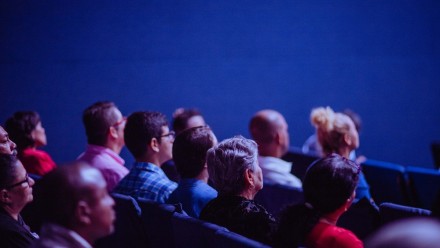SMP Seminar Series - Semester 2, Week 10
Presentation 1: “Why (and How) are We Conscious? Cooperation Between Neural Signals and the Emergence of Consciousness as a Symbolic Phenotype”
Presenter: Dr Daniel Skorich is a Lecturer in the School of Medicine and Psychology at the Australian National University, and a former Postdoctoral Research Fellow and Lecturer in the School of Psychology at the University of Queensland. Daniel’s research interests are broadly in the domain of social cognition and social psychology, with offshoots in clinical psychology, health psychology, and computational theories of mind. His PhD research challenged existing cognitive resource-focused accounts of stereotyping and impression formation. Since completing his PhD, Daniel has developed a new model of autism – the Integrated Self-Categorization model of Autism – which brings together the disparate cognitive-perceptual and social-communicative aspects of the condition under a single explanatory framework. His current research includes the development of a dynamic model of individual and group-level face perception; a multinomial processing tree model of self-categorization in the who-said-what paradigm; and – the focus of Daniel’s School seminar – an attempt at answering the “why” (and “how”) question(s) of consciousness. Daniel is also writing a book with Dr Ken Mavor – Person as Category Theory: Rethinking the Nature of the Personal Self (Routledge, 2024) – which provides an integrated account of person and group processing across a wide variety of domains and, among other things, introduces a new model of impression formation and stereotype formation.
Abstract: A resolution to the hard problem of consciousness (Chalmers, 1995) – that is, the problem of why and how it is that there is something it is like to be conscious – remains elusive. In this talk, I will propose a novel framework for understanding the “why” aspect of the hard problem, from which I will derive a tentative answer to the “how” aspect. I will first draw an analogy between information transmission in neural systems and cross-generational information transmission in biological replicators. I will argue that there is an equivalent “why” question for biological replicators – why do biological replicators go to all the trouble of creating complex phenotypes? – and an equivalent “how” question – how do biological replicators create complex phenotypes? I will then discuss the answers to these questions provided by Szathmary and Maynard-Smith (1995; Maynard-Smith & Szathmary, 1997; Szathmary, 2015) in their work on major evolutionary transitions and I will argue that these answers can be extended by analogy to the hard problem of consciousness. Specifically, I will suggest that the subjective, holistic, irreducible nature of qualitative experience emerges from a tendency for neural signals to produce higher-order informational structure – what I will refer to as a “symbolic phenotype” – through a form of “cooperation”. In order to establish this argument, I will show that, just like biological replicators, neural signals: (1) compete within populations; (2) have changed with regard to the way in which they store, use, and transmit information; (3) are subject to emergent regulatory processes and central control; (4) are hierarchically organised; and (5) are plausibly able to overcome competition between them via a process of “Stochastic Correction” (Szathmary & Demeter, 1987). Finally, having proposed an answer to the “why” aspect of the hard problem of consciousness, I will then attempt to show that one of the major evolutionary transitions in particular – that from simple chemical replicators to the genetic code – might provide a promising avenue for understanding the “how” aspect of the hard problem of consciousness.







